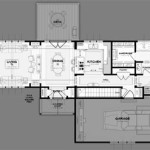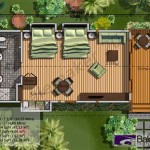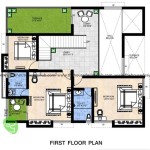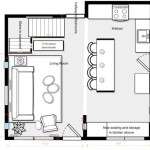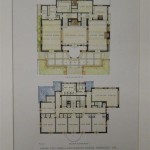Floor Plan of a Pompeian House
Pompeian houses, frozen in time by the catastrophic eruption of Mount Vesuvius in 79 AD, offer a fascinating glimpse into the domestic life of ancient Rome. With their well-preserved floor plans, these houses reveal the intricate layout and functional organization of Roman homes.
Typical Pompeian houses consisted of several distinct areas, each serving a specific purpose. These included:
Atrium
The atrium was the central courtyard of the house, open to the sky. It served as a gathering space, receiving area, and source of natural light for the interior rooms.
Impluvium
Within the atrium was a shallow pool called the impluvium, which collected rainwater from the sloping roof. This water was used for domestic purposes and as a decorative element.
Tablinum
The tablinum was a formal reception room, located opposite the atrium. It was used for receiving guests, conducting business, and storing important documents.
Alae
Flanking the tablinum were two smaller rooms known as the alae. They were typically used as bedrooms or study spaces.
Cubicula
Cubicula were small, windowless bedrooms, often located around the atrium or peristyle. They typically contained a bed and a few pieces of furniture.
Peristyle
The peristyle was a colonnaded courtyard, located behind the atrium. It provided a private outdoor space for entertaining and relaxation.
Culinary and Service Areas
These areas, located at the rear or side of the house, included the kitchen, latrine, and storage rooms. They were often built out of sight of the main reception areas.
Additional Features
Some Pompeian houses also included additional features, such as:
- Triclinia: Dining rooms
- Exedrae: Apsed alcoves for seating or socializing
- Garden spaces: Open-air courtyards with plants
- Fountains: Decorative and functional water features
- Mosaics: Elaborate floor mosaics depicting mythological scenes
The floor plan of a Pompeian house reflects the Roman emphasis on privacy and separation of public and private spaces. The atrium served as a semi-public area where guests were received, while the peristyle and cubicula provided secluded spaces for family life.
By studying the floor plans of Pompeian houses, we can gain a deeper understanding of the daily routines, social customs, and architectural ingenuity of ancient Rome.

60906 Plan

Plan Of A Pompeian House Roman Courtyard Plans Atrium

House Of The Tragic Poet Ground Floor Plan Scientific Diagram

11004 Plan
:max_bytes(150000):strip_icc()/faun_plan2-56a0208a5f9b58eba4af163c.jpg?strip=all)
Pompeii S House Of The Faun Richest Residence

House Of The Faun Home

Roman Domestic Architecture Domus Article Khan Academy

60204 Plan

Typical Villa Layout From Pompeii Roman House

File Ground Plan Of The House Tragic Poet Pompeii Jpg Wikimedia Commons

